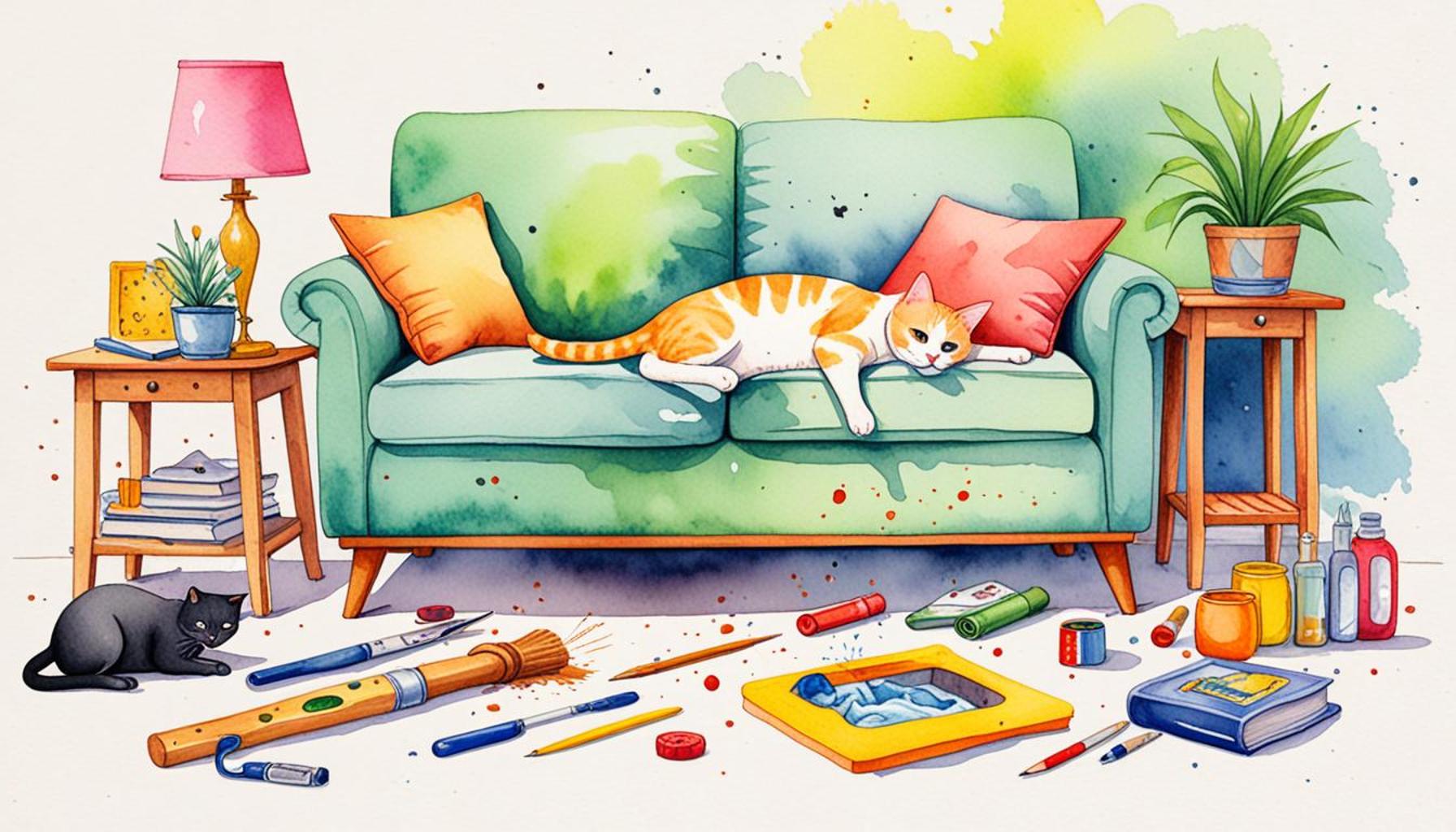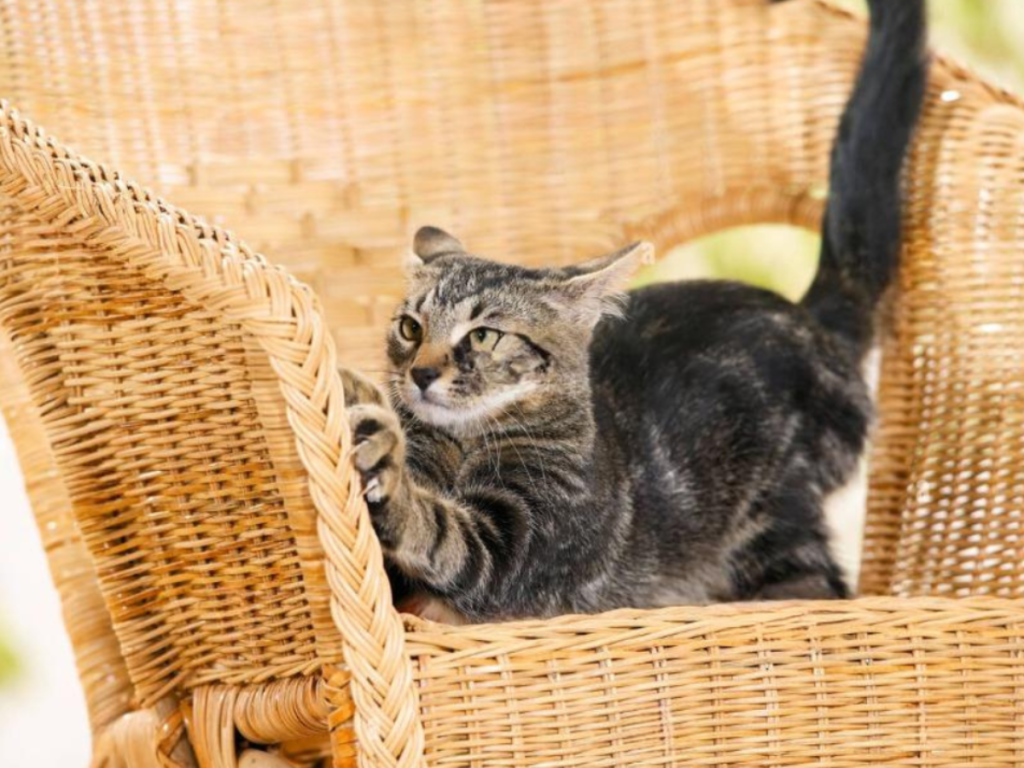How to Stop Cats from Scratching Furniture and Home Items Effectively

The Nature of Cat Scratching
Understanding a cat’s instinct to scratch is essential for any pet owner. Cats are not just adorable companions; they possess a variety of natural behaviors deeply ingrained in their instincts. Scratching is an innate action that serves multiple purposes, which can be puzzling for those who share their homes with these furry felines. Rather than viewing scratching as a nuisance, it is beneficial to recognize it as a fundamental part of your cat’s life, helping you to address it with patience and informed strategies.
Territorial Marking
One of the primary reasons cats scratch is for territorial marking. Cats are incredibly territorial creatures, and scratching is a way to leave their scent, which comes from specialized glands located in their paws. By scratching furniture or carpets, they not only indicate ownership but also communicate their presence to other animals. This instinct can be particularly pronounced in multi-animal households, where competition for space and resources exists. For instance, when a new pet arrives, you might notice your cat scratching more frequently to assert its territory.
Claw Maintenance
Another critical reason behind this behavior is claw maintenance. Cats do not just scratch for fun; they do so to shed the outer sheath of their claws, which keeps their claws sharp and healthy. A scruffy claw can lead to pain or injury, just as neglecting personal grooming can affect humans. When your cat stretches its body and digs its claws into a surface, it’s simultaneously exercising major muscles and keeping its claws in optimal condition.
Stress Relief
Just like humans engage in stress-relieving activities, such as exercise or hobbies, cats also use scratching as a means of stress relief. Life events such as moving to a new home, the introduction of new pets, or changes in routine can lead to increased scratching. Cats may scratch vigorously during these times as a way to express their anxiety or frustration. Understanding this can lead to better support for your cat during stressful periods, such as providing a safe space or interactive play to distract them.

Strategies to Manage Scratching
Recognizing these motivations allows you to devise a comprehensive strategy that not only protects your belongings but also supports your cat’s natural instincts. Solutions can include providing appropriate scratching alternatives, such as scratching posts or pads made from durable materials. Experimenting with different textures, like sisal or cardboard, can keep your cat engaged.
Additionally, using catnip can help attract your cat to designated scratching areas, making them more appealing. Moreover, training techniques that reward your cat for using scratching posts rather than furniture will encourage desirable behavior. Consider placing scratching posts near their favorite resting spots or furniture to facilitate the transition.
In essence, by understanding the motivations behind your cat’s scratching habits and implementing effective solutions, you can create a harmonious living environment. Not only will you protect your home, but you will also ensure that your cat remains happy and healthy, free to express their natural instincts in appropriate ways.
SEE ALSO: Click here to read another article
Effective Solutions for Cat Scratching
Managing a cat’s scratching behavior involves a combination of understanding, patience, and implementing targeted solutions. Since scratching is a natural behavior, it’s crucial to provide alternatives that satisfy their instincts while protecting your furniture and home items. To that end, consider the following strategies that have proven effective for many cat owners:
Provide Suitable Alternatives
One of the most important aspects of mitigating scratching is offering suitable alternatives. Cats typically prefer scratching surfaces that provide the right texture and stability. Here are some popular options:
- Scratching Posts: Invest in a sturdy scratching post that is tall enough for your cat to stretch while scratching. Choose a variety that combines different materials, such as carpet, sisal, and wood, to discover what your cat prefers.
- Scratching Pads: Flat scratching pads made of cardboard or sisal are excellent for cats who enjoy a horizontal scratching surface. These can be placed in common areas where your cat likes to scratch.
- Interactive Scratching Furniture: Consider purchasing furniture designed with integrated scratching surfaces. These multifunctional items provide a place to scratch while doubling as a place to rest.
Strategically Place Scratching Posts
Simply having scratching posts is not enough; their placement is critical. Observe where your cat scratches the most and position scratching posts nearby. For instance, if your cat scratches near the sofa, place the scratching post adjacent to it. This not only redirects their behavior but makes the posts more enticing. By creating a designated scratching area, you can prevent damage to your furniture while encouraging your cat to use the appropriate surfaces.
Positive Reinforcement
Training your cat to use scratching posts involves a rewarding process, often referred to as positive reinforcement. Use treats and praise whenever your cat chooses to scratch the designated areas instead of your furniture. This not only reinforces good behavior but also strengthens your bond with your feline friend. Be consistent with this approach; the more you reward the behavior you want to see, the more likely your cat will persist in using their scratching post over time.
Deterring Techniques
In addition to providing alternatives, consider employing deterrent techniques for furniture and unwanted items. Here are a few methods you can try:
- Double-Sided Tape: Cats dislike sticky surfaces, so applying double-sided tape to furniture can deter them from scratching.
- Scent Deterrents: Citrus fragrances are known to repel cats. Spraying a mild citrus-scented solution around your furniture can create an uninviting area for scratching.
- Furniture Covers: Using protective covers on areas where your cat tends to scratch can serve as an additional measure until they learn to scratch their designated spots.
By integrating these strategies into your routine and understanding your cat’s behavior, you can significantly reduce the chances of your feline friend leaving unsightly scratches on your cherished furniture. A harmonious solution awaits you and your cat through positive engagement with their natural instincts.
When it comes to managing a cat’s natural scratching behavior, understanding their instincts is key. Cats scratch for a variety of reasons, including marking territory, sharpening their claws, and stretching their muscles. By addressing these needs, you can redirect their behavior effectively.One of the most effective methods is to provide scratching posts or pads. These dedicated surfaces allow cats to fulfill their scratching needs without damaging your furniture. It’s essential to choose posts that are tall enough for stretching—and made of materials that appeal to your feline friend, such as cardboard, sisal, or carpet. Position them in areas where your cat frequently scratches or near their favorite resting spots to encourage use.In addition to providing appropriate scratching alternatives, consider using deterrent sprays on furniture. Commercial sprays are available that contain scents cats find unappealing. Alternatively, you can apply double-sided tape to furniture surfaces, creating an unpleasant texture for the cat while they scratch. This method effectively discourages your pet from returning to the same spot.Another innovative strategy is to engage in regular playtime with your cat. Using interactive toys can not only distract them from scratching furniture but also satisfy their hunting instincts. Active play sessions help reduce overall stress and can lead to a more well-adjusted pet.Lastly, consider using nail caps as a short-term solution. These soft caps can be applied to your cat’s nails to prevent them from causing damage while they scratch. Ensure they are fitted properly; consult your veterinarian for guidance on safe application.By combining these strategies—providing suitable scratching surfaces, utilizing deterrents, engaging in play, and considering nail caps—you can significantly reduce the likelihood of cats scratching furniture and home items, creating a harmonious living environment for both you and your furry friend.
SEE ALSO: Click here to read another article
Creating an Inviting Environment for Cats
Cat scratching is not merely a destructive habit; it is an essential aspect of feline life that serves multiple purposes, including marking territory, stretching, and even alleviating stress. To address this behavior effectively, it’s vital to create an environment that encourages healthy scratching while minimizing damage to your belongings. Here are additional techniques to consider:
Encourage Scratching Through Play
Engaging your cat in interactive play can satisfy their natural instincts and distract them from scratching unwanted items. Use toys that mimic prey movements, such as feather wands or laser pointers, to stimulate their hunting instincts. Cats expending energy through play are less likely to develop unwanted scratching habits. Schedule daily play sessions to keep your cat active and mentally stimulated, ultimately reducing their inclination to scratch furniture out of boredom.
Use Cat Furniture Strategically
Aside from scratching posts, integrate a variety of cat furniture into your home. Cat trees, shelves, and condos provide elevated spaces for cats to perch and observe their surroundings. This vertical territory can enrich their environment and meet their instinctual desire to rise above their territory. Moreover, positioning these items near favorite lounging spots or windows can entice your cat to choose them over your furniture.
Trim Your Cat’s Claws
Regularly trimming your cat’s claws can significantly decrease the potential for damage to furniture. Keeping claws at a manageable length prevents jagged edges that can catch on fabric or wood. Every two to four weeks, use a specialized cat claw clipper to carefully trim the tips of your cat’s claws. If you’re unsure how to proceed, consider asking your veterinarian or a professional groomer for guidance. Incorporating a claw trimming routine not only minimizes furniture damage but also enhances your cat’s overall comfort and well-being.
Consider Nail Caps
For persistent scratchers, nail caps might be an effective solution. These are small plastic covers designed to easily fit over your cat’s claws, preventing damage to household items. Nail caps are available in various colors, adding a fun flair to your kitty’s appearance while protecting your furniture. They typically last about 4-6 weeks before needing replacement. Consult your veterinarian for recommendations on suitable products and proper application methods to ensure safety and comfort for your cat.
Monitor Unwanted Behaviors
Understanding behavioral triggers can help you manage scratching effectively. Stressful events, such as moving to a new home or the introduction of a new pet, can lead to increased scratching. Keep a close eye on your cat’s behavior during such transitions. If your cat exhibits signs of stress, such as excessive grooming or hiding, consider consulting a veterinarian or a feline behaviorist for tailored strategies to enhance their emotional well-being.
Incorporating these elements into your cat’s environment fosters a positive atmosphere that encourages appropriate scratching behavior and protects your beloved furniture. Being proactive in addressing scratching can lead to a happy cat and a harmonious home that suits both feline and human needs.
CHECK OUT: Click here to explore more
Conclusion
Addressing the issue of cat scratching is essential not only to preserve your furniture but also to ensure the well-being of your feline friend. Understanding that scratching is an inherent behavior in cats allows for a more compassionate approach to managing it. The strategies outlined above—creating an engaging environment, utilizing appropriate cat furniture, maintaining nail care, and observing behavioral cues—are all pivotal in redirecting this natural instinct towards more suitable outlets.
Implementing effective scratching solutions can transform your home into a shared space where both you and your cat can thrive. Remember, patience, consistency, and understanding are key. Engaging your cat in playtime not only prevents boredom but fosters a strong bond between you and your pet, enriching both your lives. Additionally, regular claw maintenance and the potential use of nail caps can significantly reduce damage to your decor while keeping your cat comfortable and happy.
As you embark on this journey, consider that every cat is unique, so what works for one may not work for another. It may take some experimentation to discover the most effective methods for your particular situation. If scratching persists despite your efforts, seeking advice from a veterinarian or a feline behavior specialist can provide further insights tailored to your cat’s needs. Informed and proactive measures can lead to a harmonious cohabitation with your furry friend, making a cozy home for both cats and humans.



